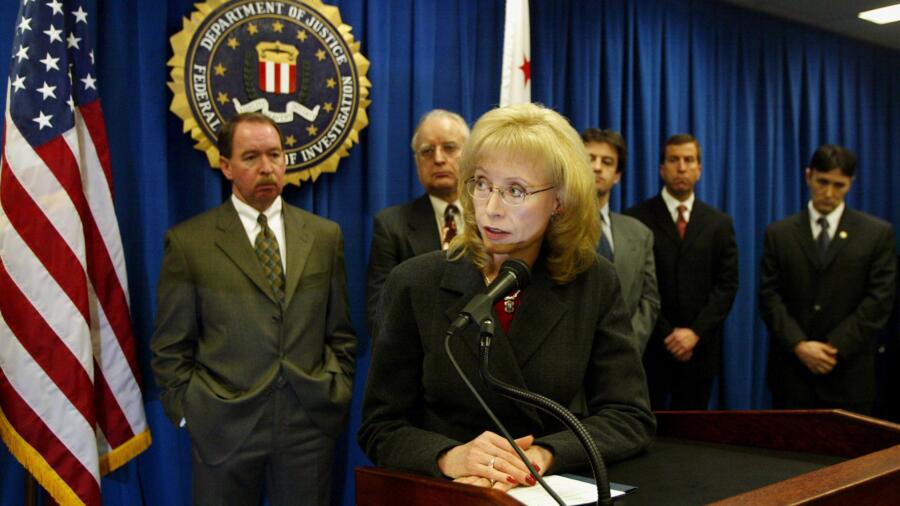When three bodies were discovered floating in Tampa Bay in 1989, investigators were stumped. The case of Joan Rogers and her two teenage daughters had gone cold—until FBI profiler Jana Monroe stepped in. Her bold, unconventional idea changed everything.
Rather than rely solely on traditional forensics, Monroe recommended enlarging a handwritten note found in the victims’ car and displaying it on billboards. This fresh approach led to a tip just 48 hours later, ultimately pointing police to Oba Chandler, a contractor later convicted of the triple murder.
For Monroe, it wasn’t just a career victory. It was proof that the new science of profiling worked—and so did she.
A Woman in a Man’s World
Joining the FBI in 1985 meant stepping into a world still adjusting to women in the field. Monroe was determined to rise within the Bureau, and she did. Becoming the first female profiler in the FBI’s Behavioral Sciences Unit (BSU) was just the beginning.
Unlike many of her male counterparts, Monroe had to prove herself repeatedly. She endured skepticism, condescension, and outright exclusion. Nevertheless, she persisted—and excelled.
From Hollywood to Homicide
Hollywood soon came knocking. Jodie Foster consulted Monroe while preparing for her role as Clarice Starling in The Silence of the Lambs. Yet Monroe’s real work often eclipsed fiction. She analyzed some of the darkest criminal minds in American history—serial killers, spree murderers, and mass shooters.
Over the years, Monroe rose through the ranks to lead both the Los Angeles and Phoenix field offices and later became the FBI’s first assistant director of cybercrime. This milestone added another layer to her already groundbreaking career.
Facing Misogyny Head-On
There was no special treatment. No extra help. “There was no welcome wagon,” Monroe said plainly. She often faced male colleagues who questioned her competence or spoke down to her.
Still, she made it clear: she wasn’t going anywhere.
Rather than shy away, she threw herself into high-risk operations and complex investigations. Through grit and intelligence, she earned her place—and others’ respect.
Confronting the Face of Evil
One of Monroe’s primary roles was interviewing violent offenders. The experience could be harrowing. Male serial killers, many of whom brutalized women, often refused to engage with her.
Even so, Monroe found her gender was sometimes an asset. In interviews with female offenders—especially those involved in kidnapping or faking pregnancies—Monroe’s identity made suspects feel understood. That allowed her to extract key confessions others could not.
Redesigning FBI Equipment for Women
While profiling gained her recognition, Monroe made change in other areas too. She helped redesign bulletproof vests for female agents. At the time, standard vests only protected the chest. The stomach, sides, and other vital areas were left exposed.
“I had to point out that we have more areas that need protection,” she said. Her advocacy made a difference, leading to better equipment for women nationwide.
Building Psychological Armor
Exposure to violent crime scenes left emotional scars. Monroe witnessed unimaginable brutality—decapitations, dismemberments, and grotesque displays of human cruelty.
Eventually, she developed coping mechanisms. By taking a clinical approach, much like a surgeon delivering difficult news, she learned to detach emotionally. Victims became case numbers, not names. While chilling, this strategy was vital for her mental health.
Ego as a Weapon
One of Monroe’s most memorable encounters involved Edmund Kemper, the infamous serial killer who murdered eight people, including his own mother.
Kemper offered unsolicited “expertise” to the FBI. Monroe saw through it. His intelligence was undeniable, but so was his ego. The key to getting killers like Kemper to talk? Flattery.
“We’d say things like, ‘You were so smart, law enforcement couldn’t catch you.’ That worked,” she explained.
The Oba Chandler Case: A Career Milestone
Of all her cases, the Oba Chandler investigation stands out. From start to finish, Monroe was involved in every step. The brutality of the crime—and the victims’ helplessness—still haunt her.
She believes Chandler used psychological control to force compliance. As a mother, Joan Rogers may have endured unimaginable horror just to protect her daughters. “It was horrifying,” Monroe recalled.
Will the FBI Ever Be Led by a Woman?
Despite Monroe’s achievements, she remains skeptical about seeing a female FBI director in her lifetime.
“I would have loved that position,” she admitted. “But I don’t think it will happen anytime soon.”
Nonetheless, her legacy as a barrier-breaking leader continues to inspire new generations of women in law enforcement.
FAQs
Who was the first female FBI profiler?
Jana Monroe was the first woman to join the FBI’s elite Behavioral Sciences Unit (BSU).
What is Jana Monroe known for?
She’s known for her groundbreaking profiling work and helping capture serial killers like Oba Chandler.
Did she face gender discrimination in the FBI?
Yes. Monroe dealt with sexism, doubt, and workplace bias but overcame them through persistence.
How did she cope with trauma from the job?
She developed a clinical mindset and emotional detachment as coping strategies.
Did she help improve FBI equipment?
Yes. She played a key role in redesigning bulletproof vests to better protect female agents.
Was Jana Monroe involved in Hollywood projects?
Yes. Jodie Foster consulted her while preparing for The Silence of the Lambs.

